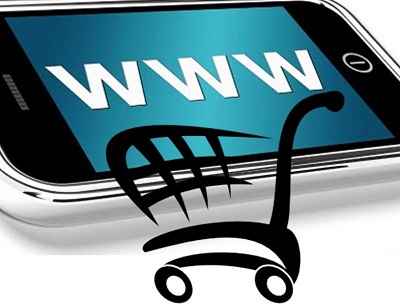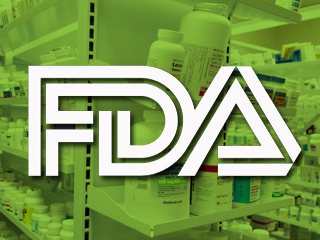BWild |
December 30, 2015
A recent forecast showed that it would reach $284 billion and 45 percent of e-shopping spending by 2020.
At the moment, consumers are using mobile commerce more than ever before to help to find products, read reviews and locate those items at brick and mortar retail locations.
That said, the current trend doesn’t show that the majority of consumers are making purchases over smartphones.
According to predictions that have been made about mobile commerce use throughout 2016, it doesn’t look as though there will be a massive change in smartphone shopping apps toward any that will be greatly superior to the current offerings. Still, m-commerce is expected to continue to represent a growing proportion of overall online spending over time. According to a new report, that will start to become quite meaningful by the year 2020.
In 2014, mobile commerce made up only 12 percent of all online sales in the United States.
 The total online spending last year had been $303 billion in the U.S. That said, according to the BI Intelligence Mobile Checkout Report, by 2020, that figure will be considerably greater. Consumers will be spending an estimated $632 billion online and 45 percent of that will have been through mobile channels.
The total online spending last year had been $303 billion in the U.S. That said, according to the BI Intelligence Mobile Checkout Report, by 2020, that figure will be considerably greater. Consumers will be spending an estimated $632 billion online and 45 percent of that will have been through mobile channels.
While American adults do spent a notably larger amount of their screen time using mobile devices such as smartphones and tablets, when it comes to their actual spending, desktops and laptops are still the gadgets of choice. Moreover, digital commerce is growing at a rate that is larger than that of in-store retail. Retail sales grew by 2 percent year over year, but digital commerce rose by 15 percent, said data from the U.S. Department of Commerce.
While smartphone shopping has been growing in its importance, it is e-commerce as a whole that has had the largest impact on total retail sales. That said, the BI Intelligence report showed that between now and 2020, there will be a notable shift as mobile commerce starts to play a much more meaningful role in e-commerce sales. It is estimated that 2015’s total for mobile shopping is $55 billion (16 percent of total online shopping), by 2020 the same figure will be 45 percent of the total, at $248 billion.
The U.S. Food and Drug Administration is looking at a new wave of wearables that can monitor serious illnesses.
While fitness trackers such as the popular Fitbit and Jawbone gadgets, there is a new form of wearable technology making its way into the marketplace and in this case, it will be necessary for FDA approval to be issued in order to be able to sell them in the United States.
That said, the FDA is looking forward to the opportunity to find certain wearables that work for medical purposes.
The first waves of these wearable technology devices are going to be heading to market soon, after extensive time in the lab in which they have been developed and extensively tested in order to meet the requirements of the FDA. These gadgets have been created in order to detect, monitor and track serious diseases in their wearers. This could help to enhance and broaden access to high quality health care and could create a new industry worth tens of billions of dollars.
This new wearable technology business opportunity could be very helpful for patients with diabetes, epilepsy and other illnesses.
 The FDA is already getting itself ready to handle the anticipated influx of mobile health gadgets that are hoping to be released pending its approval. According to the associate director for digital health with the agency, Bakul Patel, the FDA is already in the process of reviewing three new applications for senior health scientist positions that will have a focus on that specific category.
The FDA is already getting itself ready to handle the anticipated influx of mobile health gadgets that are hoping to be released pending its approval. According to the associate director for digital health with the agency, Bakul Patel, the FDA is already in the process of reviewing three new applications for senior health scientist positions that will have a focus on that specific category.
Despite the fact that the FDA has been called a barrier to innovation by certain entrepreneurs in the tech industry, the agency is hoping to alter that reputation and to become an important partner in the effort to ensure that devices can be developed that will be genuinely helpful in improving the health and quality of life of medical patients. It is also keen to encourage health insurance companies to start covering devices that receive official approval.
After all, patients, doctors, insurance companies and tech developers, alike, want to know that there is actual clinical benefit to a wearable technology device before it is released to market along with a slew of promises.
 The total online spending last year had been $303 billion in the U.S. That said, according to the BI Intelligence Mobile Checkout Report, by 2020, that figure will be considerably greater. Consumers will be spending an estimated $632 billion online and 45 percent of that will have been through mobile channels.
The total online spending last year had been $303 billion in the U.S. That said, according to the BI Intelligence Mobile Checkout Report, by 2020, that figure will be considerably greater. Consumers will be spending an estimated $632 billion online and 45 percent of that will have been through mobile channels.
 The FDA is already getting itself ready to handle the anticipated influx of
The FDA is already getting itself ready to handle the anticipated influx of 